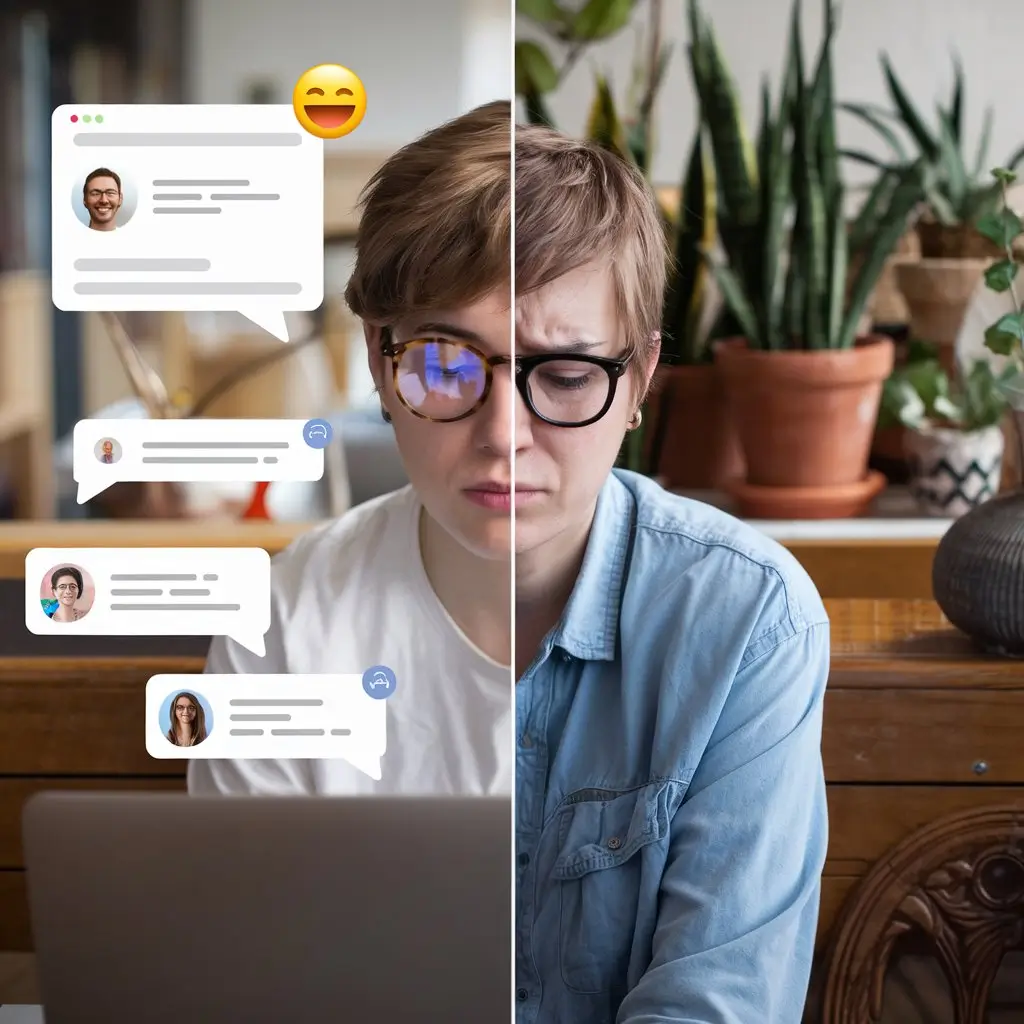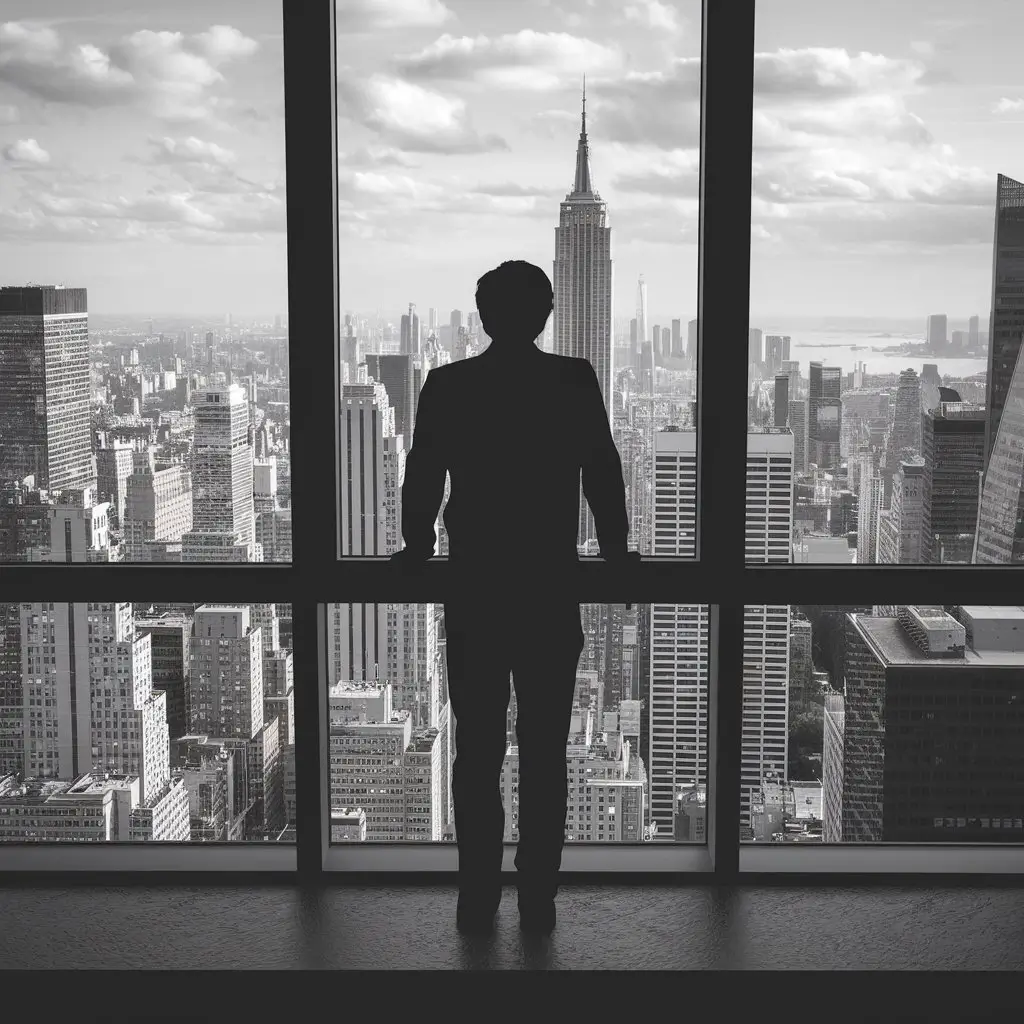In an era where social media dominates our daily interactions, the paradox of connection and isolation has never been more pronounced. While platforms like Facebook, Instagram, and Twitter allow us to stay in touch with friends and family across the globe, they can also contribute to feelings of loneliness and disconnection. This article explores how social media serves as both a tool for connection and a catalyst for social isolation, highlighting the complexities of our online interactions.
Understanding Social Isolation
Definition of Social Isolation
Social isolation refers to a lack of social connections and meaningful relationships, which can lead to feelings of loneliness.
Differentiating Isolation and Loneliness
It’s important to differentiate between social isolation and loneliness; while isolation is a physical state, loneliness is an emotional experience.
Statistics on Loneliness
According to recent studies, a significant portion of the population reports feeling lonely, emphasizing the need for a deeper understanding of this issue.
The Rise of Social Media
The advent of social media has fundamentally transformed communication in the 21st century. Emerging in the early 2000s, platforms like Friendster and MySpace set the stage for a new era of digital interactions, allowing users to create profiles, share content, and connect with others online. However, it was Facebook’s launch in 2004 that truly revolutionized the landscape, introducing a model that emphasized user engagement and connectivity on an unprecedented scale.
Evolution of Communication
As social media evolved, so did the ways in which people connected. Initially, these platforms were primarily used for maintaining friendships and family ties. However, as the number of users increased, social media became a space for diverse interactions, including professional networking, activism, and social advocacy. Platforms like LinkedIn emerged to cater specifically to professional growth, while others like Twitter became essential for real-time news and updates.
The rapid development of mobile technology further fueled the rise of social media. Smartphones made it possible to access social networks anytime and anywhere, leading to an explosion in usage. Users can now share their thoughts, experiences, and activities instantly, creating a continuous stream of content that shapes public discourse and personal relationships.
Current Usage Trends
The worldwide user base of social media platforms currently exceeds billions of people. According to recent statistics, over 4.5 billion people are actively engaged on various social media sites, with users spending an average of nearly three hours per day scrolling through feeds, liking posts, and sharing updates. This significant engagement indicates not only the popularity of social media but also its profound influence on how we communicate and perceive the world.
Moreover, the demographic landscape of social media users is diverse. While younger generations, such as Millennials and Gen Z, are often considered the primary users of platforms like Instagram and TikTok, older demographics are increasingly adopting these technologies to stay connected. This cross-generational usage has led to the creation of content that appeals to various age groups, further expanding the reach and impact of social media.
Positive Aspects of Social Media
While there are challenges associated with social media, it is essential to recognize its positive contributions. Social media has democratized information dissemination, enabling users to share their voices and experiences. This has been particularly significant for marginalized communities, who can find support and solidarity through online platforms. Additionally, social media has become a powerful tool for social change, with movements like #MeToo and Black Lives Matter gaining momentum through online advocacy.
Furthermore, social media has facilitated the growth of global connections. People can now maintain friendships across borders, share cultural experiences, and collaborate on projects without geographical limitations. This interconnectedness fosters a sense of belonging and community that transcends traditional boundaries.

Challenges and Considerations
Despite these benefits, the rise of social media raises important questions about its impact on mental health and social well-being. The constant stream of information and the pressure to present a curated version of oneself can lead to anxiety, depression, and feelings of inadequacy. Users may find themselves comparing their lives to the highlight reels of others, which can exacerbate feelings of loneliness and disconnection.
Moreover, the algorithms that govern social media platforms often prioritize content that generates high engagement, leading to the proliferation of sensationalized or polarized information. This can create echo chambers where users are exposed primarily to viewpoints that align with their own, stifling meaningful dialogue and encouraging divisiveness.
Social Media as a Tool for Connection
In an increasingly interconnected world, social media serves as a powerful tool for fostering communication and building relationships. Its ability to break down geographical barriers and facilitate interactions has transformed how we connect with friends, family, and even strangers. This section explores the various ways social media enhances connections, promotes community, and supports mental health.
Facilitating Communication
One of the most significant advantages of social media is its capacity to facilitate communication in ways that were previously unimaginable. Users can instantly share updates, photos, and thoughts with their network, making it easier to keep in touch regardless of physical distance. Platforms like Facebook and Instagram enable real-time sharing, allowing friends and family to celebrate milestones, offer support during difficult times, and maintain a sense of presence in each other’s lives.
Moreover, social media allows for diverse forms of interaction. Beyond text-based posts, users can engage through comments, likes, shares, and direct messaging, creating a dynamic and interactive communication environment. Video calls on platforms like Zoom or WhatsApp further enhance this connectivity, allowing users to have face-to-face conversations even when miles apart. This flexibility in communication helps maintain relationships that might otherwise fade due to distance.
Building Communities
Social media has also become a vital space for building communities around shared interests, identities, and causes. These online communities can range from hobbyist groups and professional networks to support forums for individuals facing similar challenges. For example, platforms like Reddit and Facebook host groups where users can discuss topics ranging from gardening to mental health, creating a sense of belonging among members.
These communities provide essential support networks that may not exist offline, particularly for individuals in marginalized or isolated populations. For instance, LGBTQ+ individuals, people with disabilities, and mental health advocates often find solace and validation within online groups where they can share experiences and seek advice. This sense of community can alleviate feelings of isolation and foster empowerment, enabling individuals to express themselves authentically.
Promoting Mental Health Awareness
Social media serves as a significant platform for promoting mental health awareness and advocacy. Many organizations and individuals use these platforms to share resources, tips, and personal stories related to mental health. Campaigns such as #MentalHealthAwareness and #EndTheStigma encourage open conversations about mental health issues, helping to destigmatize seeking help and support.
Additionally, social media can provide access to valuable information and resources. Users can discover mental health professionals, support groups, and educational content that can help them navigate their challenges. By raising awareness and providing resources, social media can empower individuals to take charge of their mental health and seek assistance when needed.
Facilitating Activism and Social Change
Beyond personal connections, social media has emerged as a powerful tool for activism and social change. Movements like Black Lives Matter and climate change activism have gained traction through social media, mobilizing supporters and raising awareness on a global scale. These platforms allow individuals to share information, organize events, and advocate for change, creating a collective voice that can influence public policy and societal norms.
The ability to connect with like-minded individuals and organizations through social media amplifies the impact of grassroots movements. Users can easily share petitions, fundraising campaigns, and educational content, fostering a sense of solidarity and collective action. This interconnectedness is crucial for driving meaningful change in society and creating a more inclusive community.
The Paradox of Online Interactions
While social media offers numerous benefits in terms of connectivity and community building, it also presents a paradox: the very platforms that enable us to connect can also lead to feelings of isolation and disconnection. This section delves into the complexities of online interactions, exploring how superficial connections, the phenomenon of Fear of Missing Out (FOMO), and the impact of idealized representations contribute to this paradox.
Superficial Connections
One of the most significant drawbacks of social media is the prevalence of superficial connections. Many users accumulate large numbers of “friends” or followers, but these online relationships often lack depth and authenticity. While it’s easy to click “like” on a post or send a quick message, these interactions rarely translate into meaningful relationships.
Research indicates that while social media can facilitate initial connections, it may not support the development of deeper, more fulfilling relationships. For instance, users may find themselves engaging in brief exchanges that lack emotional resonance, leading to a sense of emptiness. This superficiality can foster feelings of loneliness, as individuals may crave more substantial connections that social media cannot provide.
The Impact of FOMO
The phenomenon of Fear of Missing Out (FOMO) is another critical aspect of the paradox of online interactions. With the constant barrage of updates showcasing friends’ activities, achievements, and experiences, users may feel a heightened sense of anxiety and inadequacy. FOMO can manifest as a compulsive need to stay connected and informed, leading individuals to compare their lives to the curated experiences of others.
This comparison often results in feelings of exclusion and loneliness. Users may perceive that others are living more fulfilling lives, which can exacerbate their own feelings of isolation. The psychological impact of FOMO is profound, as it can lead to anxiety, depression, and a diminished sense of self-worth. Instead of fostering genuine connections, social media can inadvertently create a cycle of comparison and discontent.

Idealized Representations
Social media platforms are often characterized by idealized representations of life. Users curate their profiles to highlight positive experiences, achievements, and attractive aspects of their lives, creating a polished image that may not reflect reality. This tendency to present an idealized version of oneself can deepen the disconnect between online personas and real-life experiences.
When individuals consume this curated content, they may develop unrealistic expectations about their own lives. This can lead to feelings of inadequacy, as they compare their everyday struggles to the highlight reels of others. The pressure to maintain a perfect online image can also contribute to stress and anxiety, further isolating individuals from authentic connections.
Echo Chambers and Polarization
The algorithms that govern social media platforms often exacerbate the paradox of online interactions by creating echo chambers. These algorithms prioritize content that aligns with users’ existing beliefs and preferences, limiting exposure to diverse perspectives. As a result, individuals may find themselves surrounded by like-minded individuals, reinforcing their viewpoints while alienating those with different opinions.
This polarization can lead to a breakdown in meaningful dialogue and understanding, making it challenging to engage in constructive conversations about important issues. The lack of diverse interactions can contribute to feelings of isolation, as users may feel disconnected from broader societal discussions and experiences.
The Dark Side of Social Media
While social media has revolutionized communication and connectivity, it is not without its darker aspects. These issues can significantly impact users’ mental health and overall well-being. This section explores the pervasive problems of cyberbullying, the culture of comparison, and information overload, all of which contribute to the negative consequences of social media use.
Cyberbullying and Harassment
One of the most alarming consequences of social media is the rise of cyberbullying and harassment. The anonymity afforded by online platforms can embolden individuals to engage in harmful behavior they might not exhibit in face-to-face interactions. Victims of cyberbullying may face relentless harassment through comments, messages, or even public posts, leading to severe emotional distress.
Research has shown that victims of cyberbullying are at a higher risk for mental health issues, including anxiety, depression, and suicidal thoughts. The constant nature of online interactions means that victims may feel trapped, with no safe space to escape the harassment. Unlike traditional bullying, which may have clear boundaries, cyberbullying can follow individuals into their homes, making it difficult to find relief.
Moreover, the consequences of cyberbullying can extend beyond the individual to impact communities and social networks. Witnessing or being aware of bullying can create a toxic environment, leading to a culture of fear and distrust among users. This can further isolate victims, making it harder for them to seek help or support.
The Comparison Culture
Another significant issue stemming from social media is the pervasive culture of comparison. Users are constantly exposed to carefully curated images and narratives that showcase the highlights of others’ lives, whether it’s exotic vacations, career successes, or seemingly perfect personal relationships. This exposure can lead individuals to engage in unhealthy comparisons, resulting in feelings of inadequacy and low self-esteem.
The pressure to measure up to these idealized standards can be overwhelming. Many users begin to feel that their lives are not as fulfilling or exciting as those portrayed online, which can exacerbate feelings of loneliness and disconnection. This cycle of comparison can lead to a distorted self-image, where individuals feel compelled to present a facade of perfection in their own online profiles, perpetuating the very culture that causes them distress.
Additionally, this comparison culture can contribute to mental health issues such as anxiety and depression. Studies have shown that heavy social media users are more likely to report symptoms of these conditions, particularly among young people who are still developing their identities. The constant need for validation through likes and comments can create an unhealthy reliance on social media for self-worth.
Information Overload
In an age of constant connectivity, information overload has become a prevalent issue. Social media platforms bombard users with a vast array of content, from news articles and memes to advertisements and personal updates. This overwhelming influx can lead to cognitive fatigue and anxiety, as individuals struggle to process and respond to the sheer volume of information.
The impact of information overload is particularly pronounced during crises or significant events, such as natural disasters or political upheavals. Users may feel compelled to stay updated, leading to excessive scrolling and engagement with distressing content. This can contribute to heightened levels of anxiety and a sense of helplessness, as individuals are constantly reminded of the world’s problems without a clear path to effect change.
Moreover, the prevalence of misinformation and sensationalized content can further complicate users’ ability to discern credible information. The spread of false information can lead to confusion, fear, and mistrust, making it challenging to engage in constructive discussions about important issues. This environment can alienate users from their social networks, as differing opinions and misinformation create divisions rather than fostering understanding.
Coping with Social Isolation in the Digital Age
Mindful Social Media Use
To combat social isolation in today’s digital landscape, it is crucial to practice mindful social media use.
Encouraging Offline Interactions
Setting boundaries around screen time and being intentional about online interactions can enhance the quality of connections.
Developing Digital Literacy
Furthermore, developing digital literacy is essential; individuals should critically evaluate the content they consume and engage with online.
Conclusion
The dual role of social media in fostering connection and isolation is a complex issue that warrants attention. While these platforms provide opportunities for communication and community-building, they can also contribute to feelings of loneliness and disconnection. By reflecting on our social media habits and seeking a balance between online and offline interactions, we can enhance our mental well-being and cultivate deeper connections with those around us.


1 thought on “Social Isolation: The Role of Social Media in Our Lives”